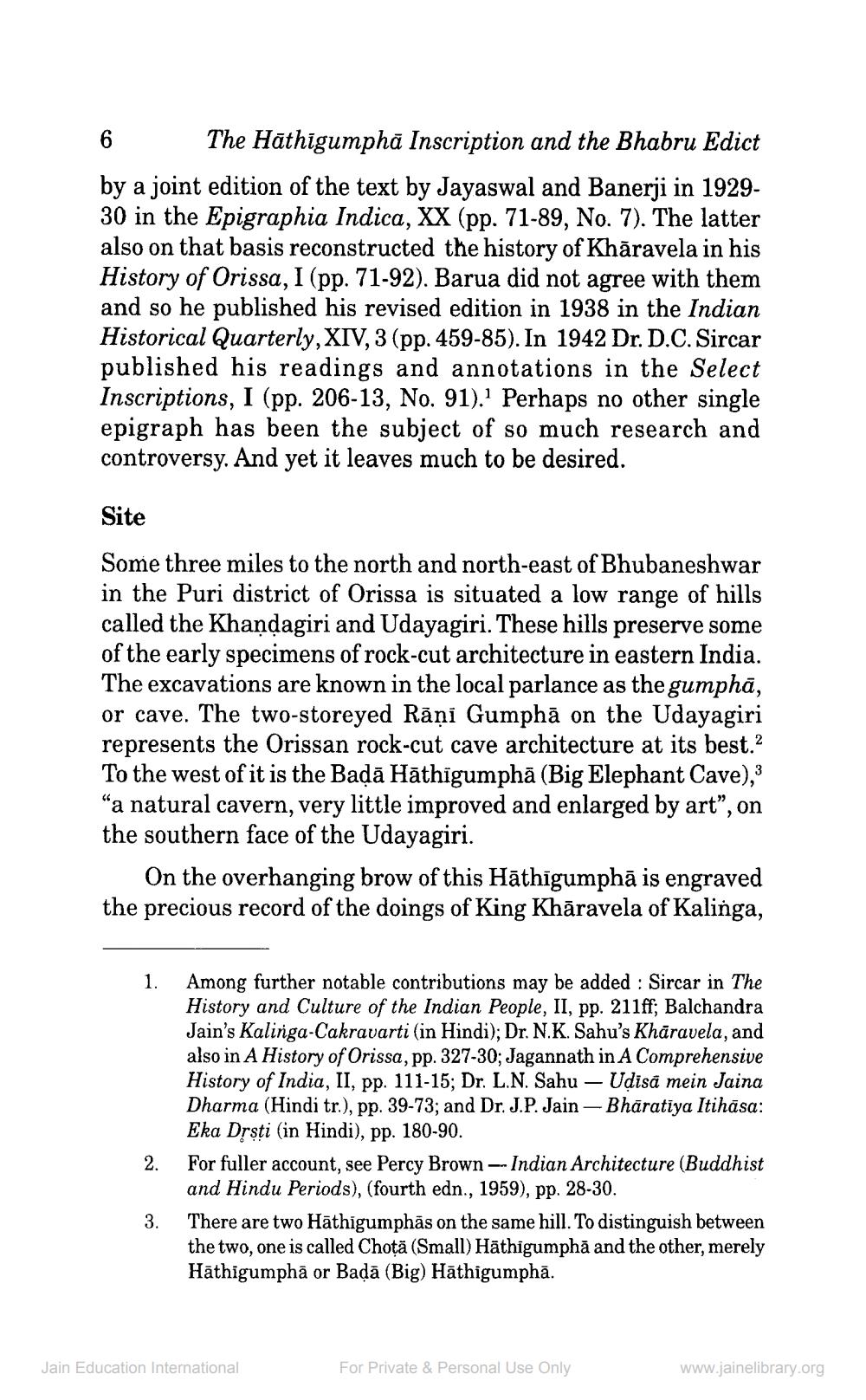________________
The Hāthigumphā Inscription and the Bhabru Edict by a joint edition of the text by Jayaswal and Banerji in 192930 in the Epigraphia Indica, XX (pp. 71-89, No. 7). The latter also on that basis reconstructed the history of Khāravela in his History of Orissa, I (pp. 71-92). Barua did not agree with them and so he published his revised edition in 1938 in the Indian Historical Quarterly, XIV, 3 (pp. 459-85). In 1942 Dr. D.C. Sircar published his readings and annotations in the Select Inscriptions, I (pp. 206-13, No. 91). Perhaps no other single epigraph has been the subject of so much research and controversy. And yet it leaves much to be desired.
Site
Some three miles to the north and north-east of Bhubaneshwar in the Puri district of Orissa is situated a low range of hills called the Khandagiri and Udayagiri. These hills preserve some of the early specimens of rock-cut architecture in eastern India. The excavations are known in the local parlance as the gumphā, or cave. The two-storeyed Rāņi Gumphā on the Udayagiri represents the Orissan rock-cut cave architecture at its best.? To the west of it is the Badā Hāthīgumphā (Big Elephant Cave), “a natural cavern, very little improved and enlarged by art”, on the southern face of the Udayagiri.
On the overhanging brow of this Hāthīgumphā is engraved the precious record of the doings of King Khāravela of Kalinga,
1.
Among further notable contributions may be added : Sircar in The History and Culture of the Indian People, II, pp. 211ff; Balchandra Jain's Kalinga-Cakravarti (in Hindi); Dr. N.K. Sahu's Khāravela, and also in A History of Orissa, pp. 327-30; Jagannath in A Comprehensive History of India, II, pp. 111-15; Dr. L.N. Sahu - Udisă mein Jaina Dharma (Hindi tr.), pp. 39-73; and Dr. J.P. Jain - Bharatiya Itihasa: Eka Dysti (in Hindi), pp. 180-90. For fuller account, see Percy Brown - Indian Architecture (Buddhist and Hindu Periods), (fourth edn., 1959), pp. 28-30. There are two Hāthigumphās on the same hill. To distinguish between the two, one is called Chotă (Small) Hāthigumph, and the other, merely Hāthigumphā or Badā (Big) Hāthigumphā.
a
co
Jain Education International
For Private & Personal Use Only
www.jainelibrary.org




